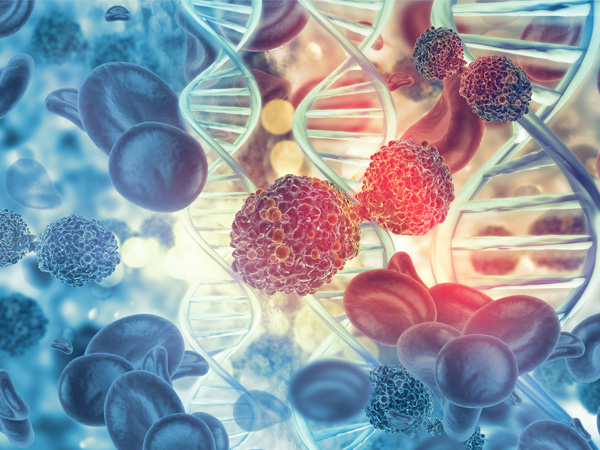Prostate Cancer: Replacing Myths With Facts

Prostate cancer is a major healthcare challenge in the US. It's also the most common cancer in adult men besides skin cancer.
But for many men, the words “prostate cancer” stop them in their tracks. This disease is often cloaked in myths, which may lead them to:
- Avoid screenings.
- Experience anxiety and depression at diagnosis.
- Fear and avoid treatment because of side effects.
By addressing these myths, we can give men the facts they need to take action.

5 common myths about prostate cancer
Myth #1: If there are no symptoms, I can’t have prostate cancer.
Fact: Men with early-stage prostate cancer often do not have symptoms. When symptoms do occur, it’s often a sign of late-stage cancer. Some of these symptoms can include:
- Trouble starting or stopping the flow of urine.
- Frequent and urgent need to urinate, especially at night.
- Blood in the urine or semen.
- Trouble having or keeping an erection.
Keep in mind that some of these symptoms may be caused by other health conditions, not necessarily prostate cancer. For example, infection or an enlarged prostate due to aging (called BPH; benign prostatic hyperplasia) can cause similar symptoms.
Myth #2: Screening tests do not help.
Fact: Since symptoms do not often occur with early-stage prostate cancer, it is important to discuss your risk factors and whether you should have screening tests performed with your healthcare provider. Risk factors include older age, family history (having a blood relative such as a father or brother who had prostate cancer), and race. African-American men are more likely to develop prostate cancer, but the disease can happen in men in various ethnic groups.
Medical organizations have different recommendations regarding screening for prostate cancer. All organizations agree, however, that the most important aspect of screening is to have a conversation with your healthcare provider about the benefits and risks of screening tests. It is recommended that you reach an informed decision together with your physician about whether or not you should get screened. These tests may help your healthcare provider detect prostate cancer even before symptoms occur.
The most common screening tests include:
- Prostate-specific antigen (PSA) blood test – PSA is a substance that can be found in blood. Elevated PSA levels are often found in men with prostate cancer. However, non-cancerous conditions such as prostatitis (inflammation of the prostate) and benign prostatic hyperplasia (enlarged prostate) can also cause PSA levels to increase.
- Digital rectal exam (DRE) – The doctor feels for hard areas or lumps in the prostate by inserting a gloved, lubricated finger into the rectum. This physical exam can make men feel anxious or uncomfortable, but it takes only a minute to do.
Further testing is often required if the results from either of these tests comes back abnormal.
Myth #3: Treatment for prostate cancer always causes impotence or incontinence.
Fact: Some types of prostate cancers may need treatment such as surgery, radiation therapy, or hormone therapy. Other types of prostate cancer may require only active surveillance or watchful waiting. As with any treatment, there is a risk of side effects; side effects of prostate cancer treatment may include erectile dysfunction, urinary or bowel dysfunction, and/or loss of fertility.
Keep in mind that not all men will experience these side effects. If there are side effects, specialists including urologists and therapists can help men manage them.
It is important for men who are diagnosed with prostate cancer to talk with their healthcare provider about their treatment options, including their potential benefits and complications. It may also be helpful to see another healthcare provider for a second opinion.
Myth #4: Real men don’t get treatment.
Fact: Society often characterizes men as independent, self-reliant, in control, powerful, and strong. As a result, men may sometimes be afraid to seek medical help. They may fear they will be seen as weak and that they should handle medical problems on their own. Support is available to help cope with these feelings and fears. Here are some examples:
- Talking with a counselor.
- Joining a support group.
- Learning coping skills to reduce stress and depression.
- Understanding ways to adjust to changing situations.
Myth #5: Prostate cancer is always fatal.
Fact: Prostate cancer is a serious disease. However, most men who are diagnosed with this disease do not die from it. In fact, the 5-year survival rate is 98.6%. Catching prostate cancer early is important because doing so may improve survival rates.
What You Can Do
Know the most common risk factors for prostate cancer, including older age, family history, and race. Though prostate cancer can happen in all ethnic groups, African-American men are more likely to develop and die of prostate cancer.
Men between the ages of 55 and 69 who are at average risk for prostate cancer should talk with their healthcare provider about being tested. Regardless of your age, if some of your relatives (grandfather, father, uncle, or brother) have been diagnosed with prostate cancer, or if you are African-American, you should talk with your healthcare provider about early detection. Together, you can discuss your risk for prostate cancer and the benefits of screenings.
Know the signs and symptoms, such as trouble urinating, blood in the urine, trouble having or keeping an erection, and pain in the bones, lower back, hips, or upper thighs. However, because early prostate cancer may not cause symptoms, it’s important to talk with your healthcare provider about your possible risk.
Stanislav Lechpammer, MD, is a Senior Director in Oncology North America Medical Affairs.
[1][2][3][4][5][6][7][8][9][10][11][12][13][14][15][16][17][18][19][20][21][22]
References
- 1. American Cancer Society. Key Statistics for Prostate Cancer. Accessed August 2, 2017.
- 2. De Sousa A, Sonavane S, Mehta J. Psychological aspects of prostate cancer: a clinical review. Prostate Cancer Prostatic Dis. 2012;15(2):120-127.
- 3. Cancer.net. Prostate Cancer: Symptoms and Signs. Accessed on August 2, 2017.
- 4. American Cancer Society. Can Prostate Cancer Be Found Early? Accessed August 2, 2017.
- 5. American Cancer Society. What Tests Can Detect Prostate Cancer Early? Accessed October 6, 2017.
- 6. Pirl WF, Mello J. Psychological Complications of Prostate Cancer. Cancer Network. Accessed August 2, 2017.
- 7. American Cancer Society. Watchful Waiting or Active Surveillance for Prostate Cancer. Accessed August 2, 2017.
- 8. Prostate Cancer Foundation. Side Effects. Accessed August 2, 2017.
- 9. American Cancer Society. Considering Prostate Cancer Treatment Options. Accessed August 2, 2017.
- 10. Hoyt MA, Stanton AL, Irwin MR, Thomas KS. Cancer-related masculine threat, emotional approach coping, and physical functioning following treatment for prostate cancer. Health Psychol. 2013;32(1):66-74.
- 11. Prostate Cancer Foundation. Finding a Support Group. Accessed August 2, 2017.
- 12. National Institutes of Health. Cancer Stat Facts: Prostate Cancer. Accessed August 2, 2017.
- 13. Markowski MC, Pienta KJ. Prostate cancer. In: Edmonson KG, Davis KJ, eds. Hazzard's Geriatric Medicine and Gerontology. 7th ed. McGraw-Hill Education; 2017.
- 14. National Institutes of Health—National Cancer Institute. Prostate-Specific Antigen PSA Test. Accessed October 31, 2017.
- 15. American Cancer Society. Prostate Cancer Screening Guidelines. Accessed October 31, 2017.
- 16. National Institutes of Health—National Cancer Institute. Prostate Cancer Treatment (PDQ®)—Patient Version. Accessed October 31, 2017.
- 17. U.S. Preventive Services Task Force (USPSTF). Prostate Cancer Screening Draft Recommendations. Accessed October 31, 2017.
- 18. American Urological Association. Detection of Prostate Cancer. Accessed October 31, 2017.
- 19. Qaseem A, Barry MJ, Denberg TD et al. Screening guidelines for prostate cancer: a guidance statement from the Clinical Guidelines Committee of the American College of Physicians. Ann Intern Med. 2013;158:761-769.
- 20. MedlinePlus. Prostate Cancer. Accessed December 19, 2017.
- 21. American Cancer Society. Signs and Symptoms of Prostate Cancer. Accessed December 19, 2017.
- 22. Centers for Disease Control and Prevention. Prostate Cancer Rates by Race and Ethnicity. Accessed December 20, 2017.






